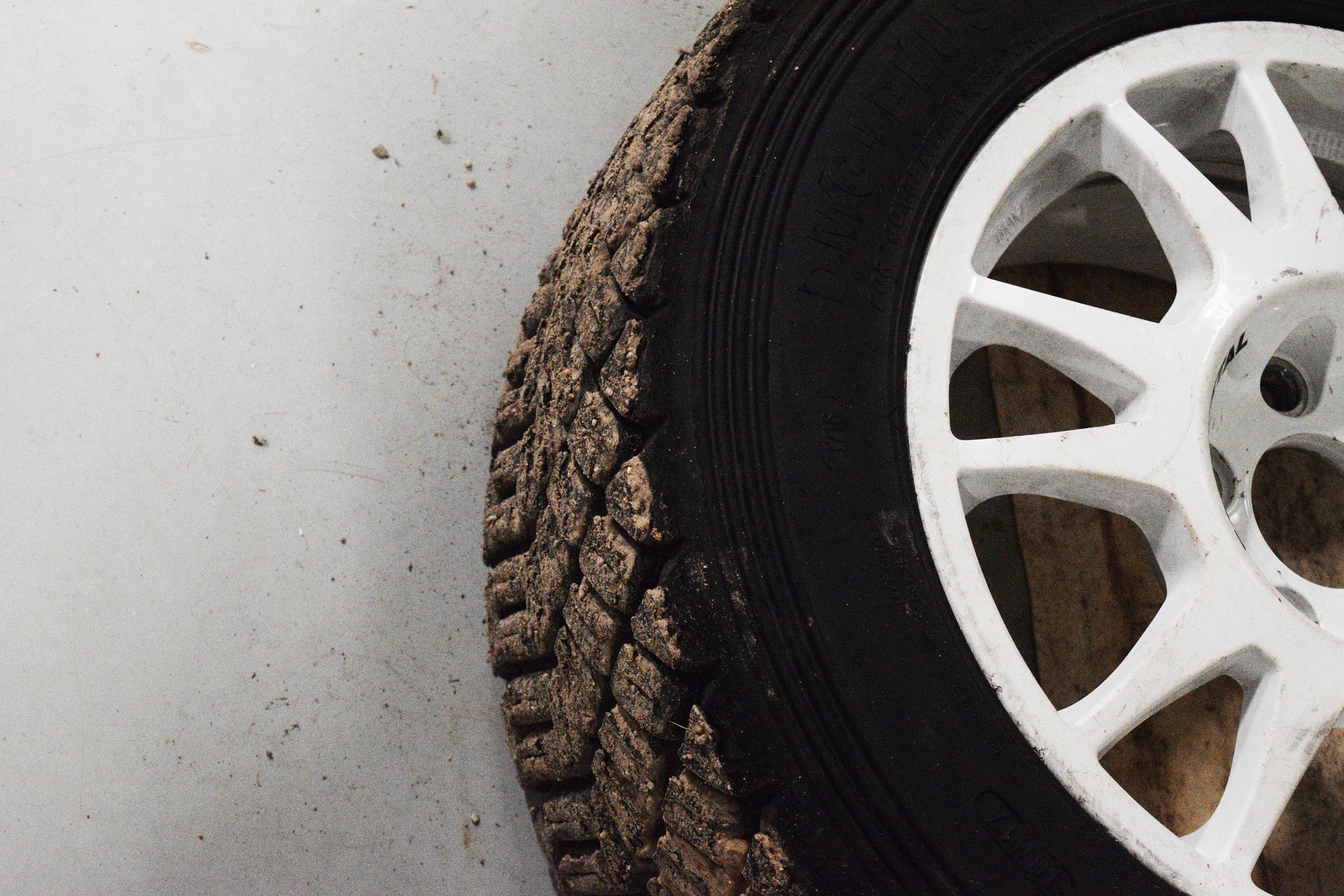
How to Change a Tire
Tire changes are covered under most roadside assistance plans, but it’s still a good idea to know to change a tire yourself. Maybe you’ll be driving through an area without cell reception, or maybe you won’t want to wait the extra 30 minutes for AAA to arrive. Additionally, the feeling of self-sufficiency may partially offset the annoyance of making a trip to the mechanic. Changing a tire is a simple process, but it’s important to follow these instructions carefully to avoid injury or improper installment of your spare.
Required Equipment:
Most vehicles come equipped with a lug wrench, jack, and spare tire, but be sure to check your vehicle for these items before setting out on a drive of any length. We also recommend purchasing wheel wedges, a tire gauge, and a tire pump to keep in your vehicle.
Part I: Prepare
1. Find a safe and level location. If you are on a busy road, move the vehicle as far from traffic as conditions allow. Park on a flat, hard surface and activate the hazard lights.
2. Place the vehicle in “Park” and apply the parking brake. If the vehicle has a manual transmission, place it in first gear.
3. Apply wheel wedges, if available. Wheel wedges help prevent the vehicle from rolling during a tire change. If the flat tire is at the rear, place wheel wedges in front of the vehicle’s front tires. If you’re changing a front tire, place the wedges behind the rear tires. You can use rocks or other heavy objects in their place.
4. Remove the hubcap or wheel cover, if one is present. Place these items in a safe location away from the road.
5. Partially loosen the lug nuts. Using the lug wrench, turn the lug nuts counterclockwise until you break the resistance. Do not loosen them further at this step. Brace yourself against the tire or vehicle if needed; heavy force may be required.
Part II: Remove the Flat
6. Place the jack under the vehicle. Position the jack directly beneath an area of exposed metal—usually the vehicle’s frame—directly adjacent to the flat tire. Do not place the jack under any plastic components, as raising the vehicle may break the plastic. Consult the vehicle’s owner’s manual for proper placement if it is not immediately apparent.
7. Crank the jack to raise the vehicle. If the vehicle appears to rise at an angle, or if the jack moves at all during this process, lower the vehicle and reposition the jack. Continue cranking until there are several inches of clearance under the flat tire.
8. Unscrew the lug nuts. Using the lug wrench, turn the lug nuts counterclockwise until you can remove them from the lug bolts. Set them aside in a safe location away from the road.
9. Remove the flat tire. Pull the tire directly away from the vehicle and set it aside. You may need to strike the tire with a rubber mallet or other blunt object to loosen rust on the lug bolts. Be careful not to apply too much force and push the vehicle off the jack.
Part III: Install the Spare
10. Mount the spare tire. Line the holes in the spare tire’s rim up with the lug bolts and mount the spare onto the hub. Instructions
11. Replace and tighten the lug nuts by hand. Turn the lug nuts clockwise until you feel resistance. Do not use the lug wrench at this step.
12. Partially lower the vehicle. Release the jack until the spare tire is resting on the ground but the vehicle’s weight is not fully resting on the tire.
13. Finish tightening the lug nuts. Use the lug wrench to turn the lug nuts clockwise as far as you can. Follow a star pattern, alternatively tightening nuts across from each other to ensure equal tightness.
14. Finish lowering the vehicle. Fully release the jack and return it to its place inside the vehicle.
15. Replace the hubcap or wheel cover, if present.
Part III: Finish the Tire Change
16. Check the pressure of the spare tire with a tire gauge, if available. A standard spare tire should be inflated to 60 pounds per square inch (PSI). Consult the vehicle’s owner’s manual to verify the correct pressure. If needed, inflate the tire using a tire pump.
17. Drive to a tire shop or mechanic. Most spare tires are not meant for long-distance driving. Find the nearest technician and repair or replace the damaged tire.


